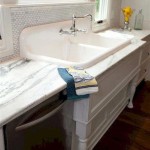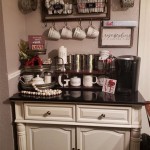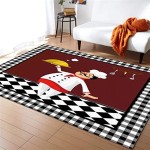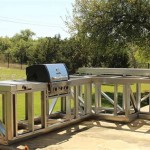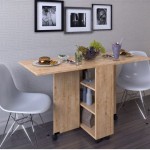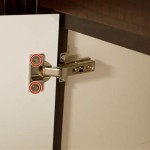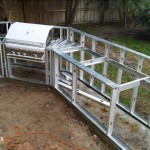Blind Corner Upper Kitchen Cabinet Ideas
Blind corner upper kitchen cabinets, often overlooked in kitchen design, present a unique challenge and opportunity. These cabinets, nestled where two walls meet at a right angle, can become dumping grounds for rarely used items if not carefully planned. However, with clever design solutions and organizational strategies, they can be transformed into valuable storage spaces, maximizing efficiency and accessibility in the kitchen.
The term “blind corner” refers to the area hidden within the cabinet, difficult to reach and often underutilized. Traditional cabinet designs offer minimal access, leading to items being lost or forgotten in the depths of the corner. To address this, innovative designs have emerged, focusing on improved accessibility, optimized storage capacity, and enhanced functionality.
Understanding the Challenge of Blind Corner Upper Cabinets
The primary challenge associated with blind corner upper cabinets lies in their limited accessibility. Reaching items stored at the back of the cabinet can be difficult, requiring significant stretching, reaching, and potentially moving other items out of the way. This inconvenience often leads to the underutilization of the space, with items being placed there only as a last resort. Furthermore, the lack of visibility within the cabinet makes it difficult to inventory the contents, contributing to forgotten items and unnecessary duplication of purchases.
Another challenge is the limited weight capacity of some blind corner cabinet solutions. Complex mechanisms, while improving accessibility, can sometimes reduce the amount of weight the cabinet can safely hold. Careful consideration must be given to the type of items being stored, ensuring they are within the weight limitations of the chosen solution.
Finally, the cost of specialty blind corner cabinet solutions can be a deterrent for some homeowners. Innovative designs and mechanisms often come with a higher price tag compared to standard cabinet configurations. Balancing budget considerations with functionality and accessibility is crucial when planning a kitchen remodel or renovation.
Effective Blind Corner Upper Cabinet Solutions
Several effective solutions have been developed to address the challenges posed by blind corner upper kitchen cabinets. These solutions aim to improve accessibility, maximize storage space, and enhance the overall functionality of the kitchen. The choice of solution depends on individual needs, budget constraints, and the overall design aesthetic of the kitchen.
One popular solution is the use of swing-out or pull-out shelves. These shelves are designed to glide smoothly out of the cabinet, bringing the contents within easy reach. Swing-out shelves typically consist of two or more shelves that are hinged together, allowing them to swing out in a coordinated motion. Pull-out shelves, on the other hand, slide out on tracks, providing easy access to the items stored on the shelves. These solutions are particularly useful for storing frequently used items, such as dishes, glassware, or spices.
Another effective solution involves incorporating lazy Susans into the blind corner upper cabinet. A lazy Susan is a rotating platform that allows users to easily access items stored at the back of the cabinet by simply rotating the platform. Lazy Susans are available in various sizes and configurations, including full-circle and pie-cut designs. They are particularly well-suited for storing canned goods, jars, and other pantry items.
Fold-out or bi-fold door cabinets offer another approach to improving accessibility. These cabinets feature doors that fold back upon themselves, providing a wider opening and better access to the interior of the cabinet. This design eliminates the obstruction caused by traditional cabinet doors, making it easier to reach items stored in the blind corner. These are often paired with pull-out shelving internally.
Consider creating a custom cabinet solution. This might involve building a cabinet with a unique shape or configuration that specifically addresses the challenges of the blind corner. For example, a custom cabinet could be designed with angled shelves or a combination of fixed and pull-out shelves to maximize storage space and accessibility. While this option may be more expensive, it allows for a truly personalized solution that perfectly meets the homeowner's needs.
Organizing Strategies for Blind Corner Upper Cabinets
Regardless of the chosen cabinet solution, effective organization is crucial for maximizing the utility of blind corner upper cabinets. Proper organization not only improves accessibility but also prevents items from being lost or forgotten in the back of the cabinet.
One essential strategy is to group similar items together. This makes it easier to find what is needed and prevents clutter from accumulating. For example, all spice jars can be stored together on a dedicated shelf or in a spice rack. Similarly, all baking supplies can be grouped together in a designated area of the cabinet.
Another helpful strategy is to utilize clear storage containers. Clear containers allow users to easily see the contents of each container without having to rummage through the cabinet. This is particularly useful for storing small items, such as tea bags, packets of seasoning, or small kitchen tools. Labeling the containers further enhances organization and makes it easier to locate specific items.
Consider using risers or tiered shelves to maximize vertical space within the cabinet. Risers elevate items, making them more visible and accessible. Tiered shelves provide multiple levels of storage, allowing users to store more items in a smaller space. These organizational tools are particularly useful for storing dishes, glassware, and canned goods.
Regularly decluttering the blind corner upper cabinet is essential for maintaining organization and preventing the accumulation of unwanted items. At least once a year, take the time to empty the cabinet and assess the contents. Discard any items that are no longer needed or used. This will help to free up valuable storage space and make it easier to access the items that are actually used.
Consider the weight distribution within the cabinet. Heavier items should be placed on lower shelves to ensure stability and prevent the cabinet from tipping over. Lighter items can be stored on upper shelves. This will also make it easier to access heavier items without having to reach too high.
Finally, consider the frequency with which items are used when deciding where to store them within the cabinet. Frequently used items should be stored in easily accessible areas, while less frequently used items can be stored in the back of the cabinet. This will make it easier to retrieve frequently used items without having to move other items out of the way.
By implementing these organizational strategies, homeowners can transform their blind corner upper kitchen cabinets from underutilized spaces into valuable storage areas that enhance the functionality and efficiency of their kitchens.

Foolproof Storage Solutions For Corner Kitchen Cabinets

Creative Kitchen Corner Ideas You Have To See Decortrendy Units Cupboard Cabinet Design

Upper Corner Cabinet What Type In 2024 Kitchen Cabinets

Blind Corner In Upper Cabinet Good Solution Storage Kitchen Solutions

Blind Corner Kitchen Cabinet Ideas Erin Zubot Design

Kitchen Design 101 How To Choose Corner Wall Cabinetry Styles For Your Dura Supreme

20 Smart Corner Cabinet Ideas For Every Kitchen

Kitchen Corner Cabinets And Storage Victoria Elizabeth Barnes

Upper Corner Kitchen Cabinet Solutions Live Simply By Annie

How To An Wall Cabinet Create A Custom Blind Corner
Related Posts

